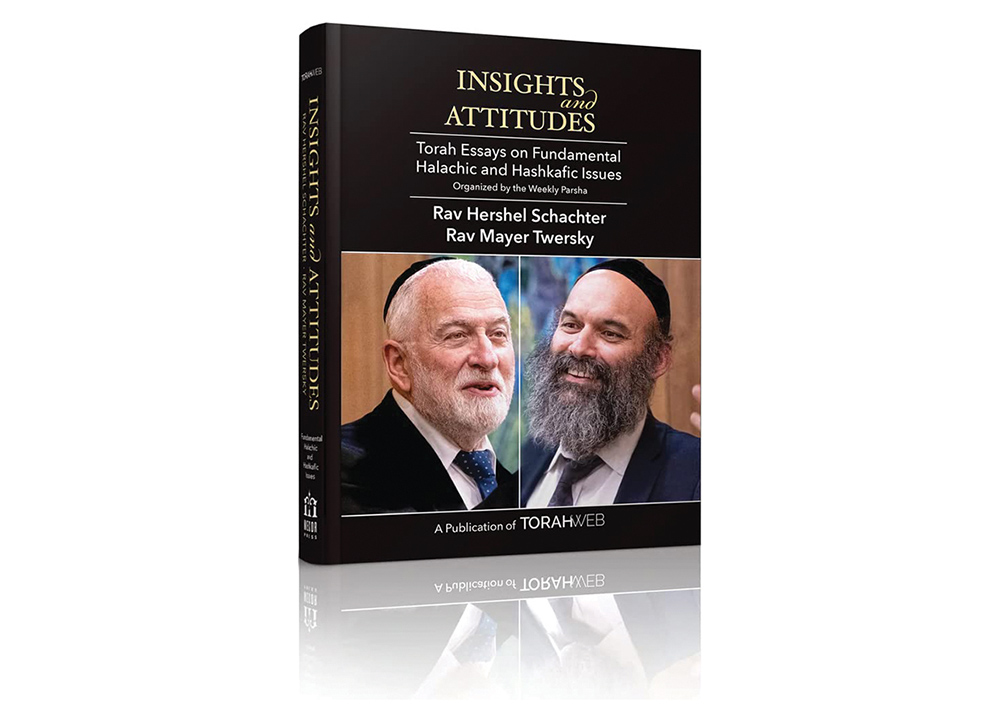
Editor’s note: This series is reprinted with permission from “Insights & Attitudes: Torah Essays on Fundamental Halachic and Hashkafic Issues,” a publication of TorahWeb.org. The book contains multiple articles—organized by parsha—by Rabbi Hershel Schachter and Rabbi Mayer Twersky.
The official anthology of readings from the works of the Gaon of Vilna is entitled, “Even Sheleima.” The choice of the title is based on the acronym it forms: the word “even” representing “Eliyahu ben,” and the word “sheleima” being read as “Shlomo,” which was the name of the gaon: Eliyahu ben Shlomo. The background for the acronym is not that well-known.
In the late 1930s, Rabbi Shmuel Maltzahn published a manuscript written by Rabbi Chaim of Volozhin (a well-known student of the gaon) where he related the following story: the gaon was fond of stating that if we look carefully into the Chumash, we will discover allusions to anything and everything that happened, both to the Jewish nation as well as to individuals, even in the centuries following the time of Moshe Rabbeinu.
On one occasion, Reb Chaim asked the Gra, “Where is there an allusion to the rebbi?” The gaon immediately opened a Chumash to parshas Ki Teitzei and reviewed it a bit until he noticed that the phrase, “even sheleima” was an allusion to his name. Reb Chaim asked the Gra why he chose to search specifically in parshas Ki Teitzei. The Gra responded that in Chumash Devarim, there are 10 sedras, and even though we usually count 11 sedras—Devarim, Nitzavim and Vayeilech are really one sedra, “as is known.” Each of these 10 sedras corresponds to each of the 10 centuries of the “sixth millennium.”
The rabbis of the Talmud (Avodah Zara 9a) had a tradition that the world would last (in its present state) for six thousand years, and then Shabbos would occur. The tradition further relays the historical breakdown of these six thousand years. The first two thousand years are labeled as “tohu,” since the notion of monotheism was not being popularized. According to the records in Chumash Bereishis, Avraham Avinu was born in the year 1948 (after the creation), and according to the tradition, he began preaching monotheism at the age of 52, which would correspond to the year 2000.
This introduced the second unit of 2000 years, which represented the two millennia of “Torah development,” which ended in the year 4000, which corresponds to the year 240 in the common calendar. Rabbi Yehuda HaNasi—who edited the mishnayos—passed away in the year 220, so this cut-off point of 240 seems to correspond to the end of the period of the Tannaim. The next 2000-year unit is labeled as “the days of Mashiach,” as Mashiach may come at any date following the year 240.
Rabbi Akiva—who thought that Bar Kochva might turn out to be the Mashiach—was not aware of this oral tradition, and his contemporaries argued with him saying that he (Rabbi Akiva) would be dead and buried, and grass would be growing on his grave, and the time for Mashiach will not have arrived, because their tradition had it that the Mashiach must arrive at some time during the last 2000 years of the 6000-year program for the world.
Thus, according to the Talmudic tradition, the sixth millennium began with the year 1240. At the time that Reb Chaim asked the Gra for an allusion to him, it was after 1740. So, the Gra explained that whatever occurred in the first-century of the sixth millennium (between the years 1240-1340) should be alluded to in parshas Devarim, and whatever occurred during the second century (between the years of 1340-1440) should be alluded to in parshas Vaeschanan, etc. Since the Gra was then in the sixth-century (of the sixth millennium), he opened right away to parshas Ki Teitzei, the sixth sedra in Chumash Devarim.
Rabbi Maltzahn, who printed this manuscript of Rabbi Chaim of Volozhin in his sefer “Emuna VeHashgacha,” added the following comment: Parshas Ki Savo is the seventh sedra, and should contain allusions to things that would occur between the years 1840-1940. At the end of the 1930s, the Nazis had already begun their extermination of the Jews, and he suggested that perhaps the bitter tochacha, rebuke, that appears in Ki Savo was not only an allusion to the many years of suffering of the galus, exile, but also, specifically, alluding to the Nazi persecutions at the end of the 1930s.
In later years, others pointed out that in the next, eighth sedra, parshat Nitzavim-Vayelech, which really is only one sedra “as is known,” we read of the return of the Jewish people to Eretz Yisrael, the great teshuva movement and the mitzvah of writing a sefer Torah. All of these were witnessed following the year 1940—through the establishment of Medinas Yisrael, the great world-wide baal teshuva movement and the popularity of the mitzvah of writing a sefer Torah.
We hope that Hashem will be “מוסיף מחול על הקדש” and will be “mekabel Shabbos,” and hasten the coming of the Mashiach before the end of the sixth millennium.
Rabbi Hershel Schachter joined the faculty of Yeshiva University’s Rabbi Isaac Elchanan Theological Seminary in 1967, at the age of 26, the youngest Rosh Yeshiva at RIETS. Since 1971, Rabbi Schachter has been Rosh Kollel in RIETS’ Marcos and Adina Katz Kollel (Institute for Advanced Research in Rabbinics) and also holds the institution’s Nathan and Vivian Fink Distinguished Professorial Chair in Talmud. In addition to his teaching duties, Rabbi Schachter lectures, writes, and serves as a world renowned decisor of Jewish Law.









